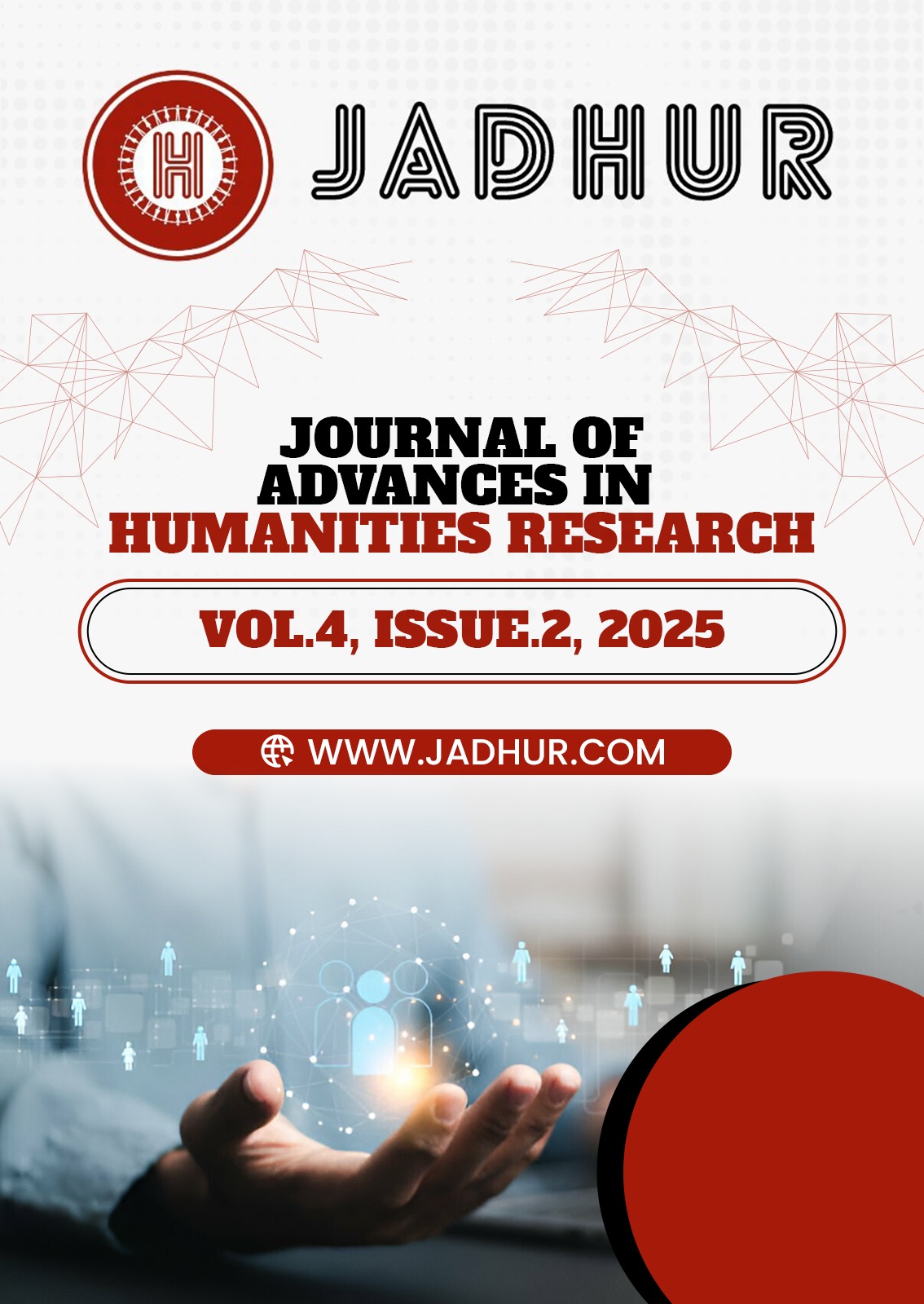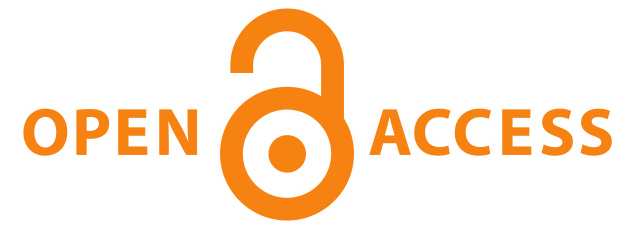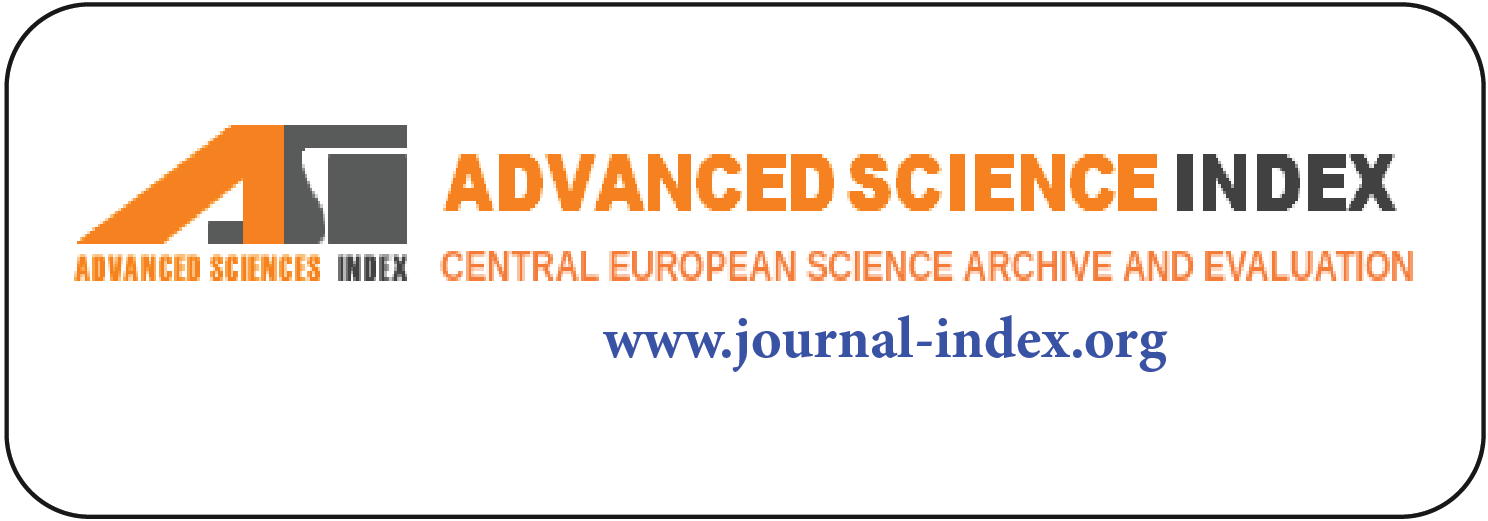The Future of Talk Shows: AI-Driven Virtual Hosts and Their Impact on Media Communication: A Systematic Literature Review
DOI:
https://doi.org/10.56868/jadhur.v4i2.306Keywords:
AI-driven Virtual Hosts, Synthetic Media, Talk Shows, Media Communication, Audience Reception, Ethical Implications, Regional AdoptionAbstract
This study investigates the emergence of AI-driven virtual hosts in contemporary media, focusing on their technological foundations, adoption patterns, audience reception, and ethical implications. Through a systematic literature review and thematic analysis of 120 peer-reviewed articles, the research examines how synthetic media personalities are transforming media production and consumption practices. The findings reveal significant regional disparities in adoption: East Asian countries particularly China, Japan, and South Korea lead due to strong cultural acceptance and government-supported innovation, while Western markets adopt a more cautious approach. Audience engagement also varies by context; entertainment-oriented AI hosts foster parasocial relationships, whereas news-based applications are met with skepticism and concerns about authenticity. Three major contributions emerge from this study. First, it challenges universalist narratives of AI adoption by underscoring the role of sociotechnical and cultural factors in shaping regional implementation. Second, it introduces empirical evidence of an “empathy gap” in human–AI interaction, highlighting the limited emotional resonance audiences experience with synthetic hosts. Third, it proposes a comparative framework that links technological capability with cultural acceptance across global media systems. Ethical challenges—particularly those involving transparency, labor displacement, and algorithmic bias—are critically examined, emphasizing the urgent need for robust governance frameworks. The study concludes that hybrid models combining human and AI presenters, alongside culturally responsive and ethically sound design strategies, are vital for the responsible integration of AI in media. By bridging technological, cultural, and normative dimensions, this research advances academic discourse and provides actionable insights for media practitioners and policymakers navigating the evolving landscape of synthetic media.
References
AI Talk Show. (2024, July 19). AI Hosted Talk Show, Episode II [Video]. YouTube. https://youtu.be/tgMi93hk84I
Afzal, M., Junejo, A., & Khoso, A. K. (2025). Bridging Instructional Excellence and Student Success: Exploring How Faculty Management Influences Academic Performance and Loyalty Through the Lens of Student Self-Efficacy. International Premier Journal of Languages & Literature, 3(1), 54-75. https://ipjll.com/ipjll/index.php/journal/article/view/46
Bergner, A. S., Hildebrand, C., & Häubl, G. (2023). Machine talk: How verbal embodiment in conversational AI shapes consumer–brand relationships. Journal of Consumer Research, 50(4), 742-764. https://doi.org/10.1093/jcr/ucad014
Broussard, M., Diakopoulos, N., Guzman, A. L., Abebe, R., Dupagne, M., & Chuan, C. H. (2019). Artificial intelligence and journalism. Journalism & mass communication quarterly, 96(3), 673–695. https://doi.org/10.1177/1077699019859901
Chan-Olmsted, S. M. (2019). A review of artificial intelligence adoptions in the media industry. International journal on media management, 21(3-4), 193-215.
Chen, X., Gao, W., Chu, Y., & Song, Y. (2024). Enhancing interaction in virtual-real architectural environments: A comparative analysis of generative AI-driven reality approaches. Building and Environment, 266, 112113. https://doi.org/10.1016/j.buildenv.2024.112113
Choudhury, M., Prabhu, S., Sabri, A. K., & Marhoon, H. A. (2023, September). Impact of artificial intelligence (AI) in the media and entertainment industry. In AIP Conference Proceedings (Vol. 2736, No. 1). AIP Publishing. https://doi.org/10.1063/5.0171147
Crosby, J. M. (2022). Audience 2.0: new dynamics of audience reception in the age of social media (Doctoral dissertation, Newcastle University). http://theses.ncl.ac.uk/jspui/handle/10443/5648
Ducasse, J., Kljun, M., & Čopič Pucihar, K. (2020). Interactive web documentaries: A case study of audience reception and user engagement on iOtok. International Journal of Human–Computer Interaction, 36(16), 1558-1584. https://doi.org/10.1080/10447318.2020.1757255
Dumbach, P. (2024). Adoption of artificial intelligence in industry and politics: An analysis based on web mining and case studies across diverse data sources (Doctoral dissertation, Friedrich Alexander Universität Erlangen Nürnberg, Germany). https://creativecommons.org/licenses/by/4.0/
Eder, M., & Sjøvaag, H. (2025). Falling behind the adoption curve: Local journalism’s struggle for innovation in the AI transformation. Journal of Media Business Studies, 1-19. https://doi.org/10.1080/16522354.2025.2473301
Feher, K. (2024). Exploring AI media. Definitions, conceptual model, research agenda. Journal of Media Business Studies, 21(4), 340–363. https://doi.org/10.1080/16522354.2024.2340419
Fieiras Ceide, C., Vaz Álvarez, M., & Maroto González, I. (2024). AI implementation strategies in the Spanish press media: Organizational dynamics, application flows, uses and future trends 55(01). Trípodos. https://doi.org/10.51698/tripodos.2024.55.01
Goisauf, M., & Cano Abadía, M. (2022). Ethics of AI in radiology: a review of ethical and societal implications. Frontiers in Big Data, 5, 850383. https://doi.org/10.3389/fdata.2022.850383
Gupta, N., Kumar, M. V., Sundake, A., Sharmely, G., Jothi, N., & Sivananthavalli, A. S. (2024, November). AI-Driven Digital Narratives: Revolutionizing Storytelling in Contemporary English Literature through Virtual Reality. In 2024 Second International Conference Computational and Characterization Techniques in Engineering & Sciences (IC3TES) (pp. 1-5). IEEE. https://doi.org/10.1109/IC3TES62412.2024.10877467
Guzman, A. L., & Lewis, S. C. (2020). Artificial intelligence and communication: A human–machine communication research agenda. New media & society, 22(1), 70-86. https://doi.org/10.1177/1461444819858691
Hill, A. (2018). Media audiences and reception studies. In Reception studies and audiovisual translation (pp. 3-19). John Benjamins Publishing Company. https://doi.org/doi.org/10.1075/btl.141.02hil
Ittefaq, M., Zain, A., Arif, R., Ala-Uddin, M., Ahmad, T., & Iqbal, A. (2025). Global news media coverage of artificial intelligence (AI): A comparative analysis of frames, sentiments, and trends across 12 countries. Telematics and Informatics, 96, 102223. https://doi.org/10.1016/j.tele.2024.102223
Kaclová, M. (2024). Exploring the Landscape: Generative AI Adoption Among Central and Eastern European PR Professionals. International Journal of Strategic Communication, 1-16.
Kaur, G. (2024, November). A Study of NLP and AI-Driven Online Text-to-Video Generation Platforms in Social Media. In 2024 2nd International Conference on Advances in Computation, Communication and Information Technology (ICAICCIT) (Vol. 1, pp. 1065-1071). IEEE. . https://doi.org/10.1109/ICAICCIT64383.2024.10912131
Khoso, A. K., Honggang, W., & Darazi, M. A. (2025). Empowering creativity and engagement: The impact of generative artificial intelligence usage on Chines EFL students' language learning experience. Computers in Human Behavior Reports, 18, 100627. https://doi.org/10.1016/j.chbr.2025.100627.
Khoso, A. K., Honggang, W., & Afzal, M. (2024). Unraveling the impact of Facebook addiction on EFL students: a dual lens on self-esteem and academic achievement. Russian Law Journal, 12(2), 1167-1187. https://doi.org/10.21608/ijaiet.2024.275179.10225-w
Last Week Tonight. (2023, February 27). Artificial intelligence: Last Week Tonight with John Oliver (HBO) [Video]. YouTube. https://www.youtube.com/watch?v=Sqa8Zo2XWc4
Liang, F. (2020, October). AI powered digital media platform and its applications. In Proceedings of the 2020 Conference on Artificial Intelligence and Healthcare (pp. 121–126). Association for Computing Machinery. https://doi.org/10.1145/3433996.3434018
Marsh, C. (2009). Audience reception. In J. C. Lyden (Ed.), The Routledge Companion to Religion and Film (pp. 255–274). Routledge.
Martínez Cano, F. J. (2024). A look at the crossroads of artificial intelligence, films, video games, and virtual reality. In R. V. Benítez Rojas & F. J. Martínez Cano (Eds.), Revolutionizing Communication: The Role of Artificial Intelligence (1st ed., pp. 26–36). CRC Press. https://doi.org/10.1201/9781003473633
McCormick, J. B., Boyce, A. M., Ladd, J. M., & Cho, M. K. (2012). Barriers to considering ethical and societal implications of research: Perceptions of life scientists. AJOB primary research, 3(3), 40-50. https://doi.org/10.1080/21507716.2012.680651
Mohamed, A. O. (2024). The effect of simulating virtual scenes using artificial intelligence techniques in producing various media materials. Journal of Ecohumanism, 3(8), 816-836. https://doi.org/10.62754/joe.v3i8.4771
Nader, K., Toprac, P., Scott, S., & Baker, S. (2024). Public understanding of artificial intelligence through entertainment media. AI & society, 39(2), 713-726. https://doi.org/10.1007/s00146-022-01427-w
Nasser El Erafy, A. (2023). Applications of Artificial Intelligence in the field of media. International Journal of Artificial Intelligence and Emerging Technology, 6(2), 19-41 https://doi.org/10.21608/ijaiet.2024.275179.1006
Nixon, L., Apostolidis, K., Apostolidis, E., Galanopoulos, D., Mezaris, V., Philipp, B., & Bocyte, R. (2024). AI and data-driven media analysis of TV content for optimised digital content marketing. Multimedia Systems, 30(1), 25. https://doi.org/10.1007/s00530-023-01195-7
Pataranutaporn, P., Danry, V., Leong, J., Punpongsanon, P., Novy, D., Maes, P., & Sra, M. (2021). AI-generated characters for supporting personalized learning and well-being. Nature Machine Intelligence, 3(12), 1013-1022. https://doi.org/10.1038/s42256-021-00417-9
Prakash, G., & Sabharwal, D. (2024). AI revolution in online media: Transforming content creation, distribution, and consumption. In Media and AI: Navigating the future of communication (p. 179). Post Script Books.
Prasad, R., & Makesh, D. (2024). Impact of AI on Media & Entertainment Industry. Media & Journalism Transformations-Emerging Trends and Paradigm Shifts. Bingley: Emerald Publications, 41-71.
Rajagopal, N. K., Qureshi, N. I., Durga, S., Ramirez Asis, E. H., Huerta Soto, R. M., Gupta, S. K., & Deepak, S. (2022). Future of business culture: An artificial intelligence‐driven digital framework for organization decision‐making. Complexity, 2022(1), 7796507. https://doi.org/10.1155/2022/7796507
Ramagundam, S., & Karne, N. (2024, September). The New Frontier in Media: AI-Driven Content Creation for Ad-Supported TV using Generative Adversarial Network. In 2024 7th International Conference of Computer and Informatics Engineering (IC2IE) (pp. 1-6). IEEE. https://doi.org/10.1109/IC2IE63342.2024.10747969
Raptis, G. E., Theodorou, V., & Katsini, C. (2023, August). Towards enhancing the media industry through ai-driven image recommendations. In IFIP Conference on Human-Computer Interaction (pp. 574-579). Cham: Springer Nature Switzerland. https://doi.org/10.1007/978-3-031-42293-5_75
Raut, S., Chandel, A., & Mittal, S. (2025). Enhancing marketing and brand communication with AI-driven content creation. In AI, corporate social responsibility, and marketing in modern organizations (pp. 139-172). IGI Global Scientific Publishing. https://doi.org/10.4018/979-8-3373-0219-5.ch008
Reinhardt, A. (2024, February 5). The rise of AI emcees: A glimpse into the future of event hosting. https://attilioreinhardt.com/en/ai-emcees/
Rostamian, S., & Moradi Kamreh, M. (2024). AI in broadcast media management: Opportunities and challenges. AI and Tech in Behavioral and Social Sciences, 2(3), 21-28. https://doi.org/10.61838/kman.aitech.2.3.3
Safira, S. (2024). Revolutionizing Television Media: The Role Of Artificial Intelligence. Jurnal Ekonomi, 13(02), 1074-1082. https://www.ejournal.seaninstitute.or.id/index.php/Ekonomi/article/view/4303
Schrøder, K. C. (2018). Audience reception. In P. M. Napoli (Ed.), Mediated Communication (Handbooks of Communication Science, Vol. 7, pp. 105–128). De Gruyter. https://doi.org/10.1515/9783110481129-008
Sherry, J. L. (2013). The challenge of audience reception: A developmental model for educational game engagement. New directions for child and adolescent development, 2013(139), 11-20. https://doi.org/10.1002/cad.20027
Shukla, R., Sinha, A., & Chaudhary, A. (2022). TweezBot: An AI-driven online media bot identification algorithm for Twitter social networks. Electronics, 11(5), 743. https://doi.org/10.3390/electronics11050743
Shweki, W. F., Alani, S. M., Habes, M., & Alghizzawi, M. (2025). Palestinian Journalists' Attitudes Regarding Adopting AI Tools in Digital Media Content Production. In Knowledge Sharing and Fostering Collaborative Business Culture (pp. 485-498). IGI Global Scientific Publishing. https://doi.org/10.4018/979-8-3373-0710-7.ch025
Singh, P. (2024). Media 2.0: A Journey through AI-Enhanced Communication and Content. Media and Al: Navigating, 127.
Song, J., Deng, J., Xin, X., Wu, X., & Liu, H. (2021, June). Exploration of Online and Offline Media Convergence Based on Artificial Intelligence Technology. In 2021 IEEE/ACIS 19th International Conference on Computer and Information Science (ICIS) (pp. 102-107). IEEE. https://doi.org/10.1109/ICIS51600.2021.9516870.
Sundar, S. S., & Lee, E. J. (2022). Rethinking communication in the era of artificial intelligence. Human Communication Research, 48(3), 379-385. https://doi.org/10.1093/hcr/hqac014
Trattner, C., Jannach, D., Motta, E., Costera Meijer, I., Diakopoulos, N., Elahi, M., ... & Moe, H. (2022). Responsible media technology and AI: challenges and research directions. AI and Ethics, 2(4), 585-594. https://doi.org/10.1007/s43681-021-00126-4
Tsonkov, N., & Zlatev, M. (2025). AI adoption as a modern regional policy tool in the smart and economic development process of European regions (Preprint). Preprints. https://doi.org/10.20944/preprints202502.1808.v1
Whittlestone, J., Nyrup, R., Alexandrova, A., Dihal, K., & Cave, S. (2019). Ethical and societal implications of algorithms, data, and artificial intelligence: A roadmap for research (Technical report). Nuffield Foundation.http://www.nuffieldfoundation.org/sites/default/files/files/Ethical-and Societal Implications of Data and AI report Nuffield Foundat.pdf
Yigitcanlar, T., Senadheera, S., Marasinghe, R., Bibri, S. E., Sanchez, T., Cugurullo, F., & Sieber, R. (2024). Artificial intelligence and the local government: A five-decade scientometric analysis on the evolution, state-of-the-art, and emerging trends. Cities, 152, 105151. https://doi.org/10.1016/j.cities.2024.105151
Yulia, V. (2024, December). Technology Adoption Artificial Intelligence In The Practice Of Local Media Journalism In Padang City. In International Conference on Communication and Media Digital (Vol. 1, No. 1, pp. 380-399). https://journal.uir.ac.id/index.php/icommedig/article/view/19400
Downloads
Published
How to Cite
Issue
Section
License
Copyright (c) 2025 Qinghao Guo, Somdech Rungsrisawat, Cheng Liu

This work is licensed under a Creative Commons Attribution 4.0 International License.
















